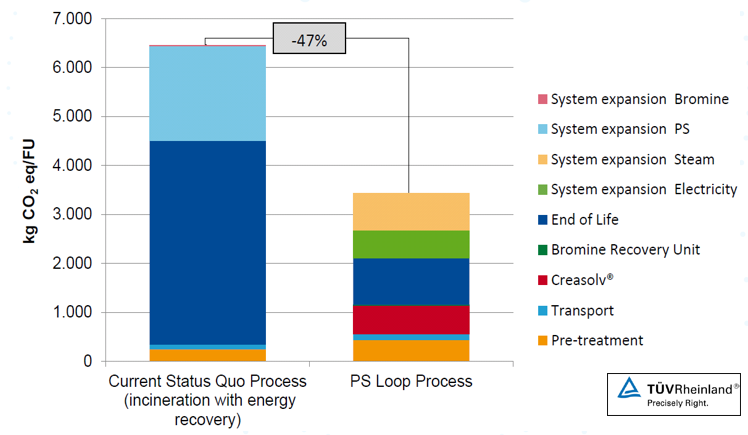CIRCULAR ECONOMY
CIRCULAR ECONOMY
Why:
Since 2016 the use of a brominated flame-retardent called HBCD is no longer permitted in polystyrene construction foam, resulting in 100.000 tons of PS foam waste per year. To keep the valuable resource polystyrene in the loop, to produce new products, the HBCD needs to be removed safely. By recycling 50 % of carbon emissions can be saved.
How:
The PS Cooperatief U. A, a Dutch cooperative with 59 supporters and members from the European PS value chain founded the project in 2018. It’s aim was to prove technical and economic feasibility. The plant, which has since gone by the name PSLoop, is the first industrial facility for recycling EPS insulation materials from demolition and renovation work. In 2022, GEC Group GmbH had rescued the Dutch PolyStyreneLoop plant from insolvency, making it a wholly owned subsidiary of GEC Group. More than 17 million euros were invested in the construction of the plant.
What:
This physical recycling process currently allows Terneuzen to recycle 3,000 tons of HBCD-containing material per year. The maximum expansion stage is 8,000 tons per year. In this way, CO2 emissions are reduced by up to 50 percent and the environment and climate are protected.
EPS Recycling

Life cycle assessment
A life cycle assessment (LCA) was conducted by TüV Rheinland to assess how PolyStyreneLoop compares to incineration. The study showed that the carbon foot print is almost halved when choosing PolyStyreneLoop. For every ton PS-foam treated by PolyStyreneLoop the equivalent to 3 ton CO2 are saved.

